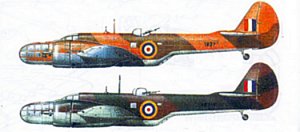Koster Aero Enterprises 1/48 Martin Maryland | | History The Martin Maryland was a three-place reconnaissance bomber designed for the US Army Air Force in 1938. After failing to receive production orders, it was marketed in Europe to the British and French and eventually served with those countries and South Africa as well. Though useful as a light bomber, it found it's true calling as a medium-range, high-speed recce machine. French Marylands saw action against the Nazi invasion, and later against the Allies in Morrocco and the Middle East. The British and South Africans used them mainly in Africa and the Middle East for several years, before Baltimores replaced them. The prototype Model 167W first flew in February 1939. Powered by two 1050 hp Pratt & Whitney R-1830 Twin Wasp radials, the Maryland could reach a top speed of 304 mph at 13,000 feet, and cruise at 248 mph; range was a comparatively long 1300 miles. Armament included four .30 cal machine guns mounted in the wings, and two .303 machine guns, pone each in dorsal and ventral positions. It could also carry up to 2000 lbs of bombs. The Kit 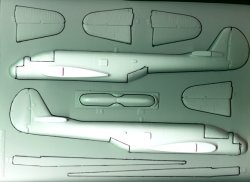 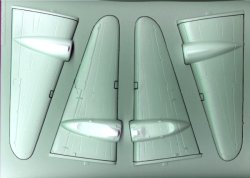
Koster's new kit is the only one I know of in this scale. It consists of: -
12 vacuformed pieces on two sheets of white plastic -
11 clear vacuformed pieces for canopy glazings, turret, etc. -
13 white metal parts -
34 resin detail parts -
4 page instructions & marking guide -
waterslide decals for 9 aircraft 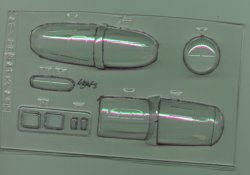 The vacuformed pieces make up the bulk of the airplane's external structure (fuselage, tail and wings). These pieces are the typical high quality one expects from Koster, with sharply engraved panel and control surface lines that actually meet up across part halves. Also included is a two piece wing spar that lends extra support to the wings - and enables one to set the correct dihedral. Clear parts are crystal clear and well-formed, though the framing detail is a little soft. The vacuformed pieces make up the bulk of the airplane's external structure (fuselage, tail and wings). These pieces are the typical high quality one expects from Koster, with sharply engraved panel and control surface lines that actually meet up across part halves. Also included is a two piece wing spar that lends extra support to the wings - and enables one to set the correct dihedral. Clear parts are crystal clear and well-formed, though the framing detail is a little soft.
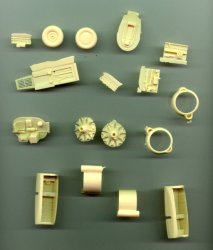 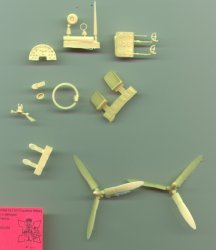
Since moving to Illinois, Koster has contracted his resin casting out to a new vendor, in this case Fort Dusquesne. Resin bits are made of a hard, tan polyurethane resin similar to what Black Box and True Details use. There are very few defects (pits, voids, etc.), no mold misalignments and little flash. The resin bits build up the engines and cowlings, interior detail, and parts of the landing gear (tires and tailwheel). Detail on these parts is phenomenal - but be careful: several of the parts, like the dual control yokes, are extremely fine and therefor extremely fragile. 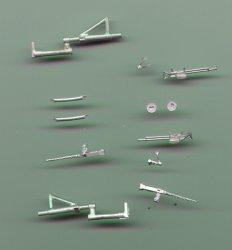 Metal parts are equally well cast. These include landing gear struts and two different sets of flexible machine guns - for British/South African or French aircraft. Metal parts are equally well cast. These include landing gear struts and two different sets of flexible machine guns - for British/South African or French aircraft.
Decals are custom printed by MicroScale, so you know they're good. All are perfectly registered and crisply printed. You get markings for 9 aircraft: 7 French (6 of these in Vichy markings - you'll need to paint the yellow/red stripes), one South African and one British. Instructions consist of three pages of exploded diagram type drawings, plus a color marking guide. The assembly directions are reasonably well detailed and anyone who has built a modern injection kit should have no trouble following them. There are also some textual tips for working with vacuforms. The marking guide consists of 9 color profiles (port side views only) and scrap views showing generic camouflage schemes. 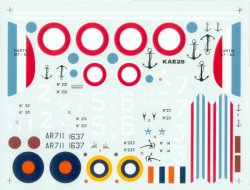 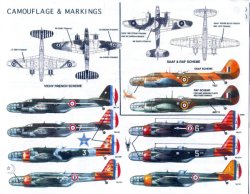
Conclusions It's an obscure subject and a twin-engine prop - what more could I want (well, maybe floats)? I'm looking forward to working on this one - as soon as I clear the backlog of half-built models off my bench. It's certainly well worth the price, so if you have a yen for something off the beaten path and aren't afraid of vacs, I highly recommend it. Review kit courtesy of my wallet and obsession for plastic airplanes in 1/48 scale. |


 




|
